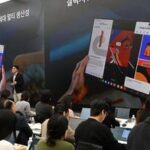Tesla’s Full Self-Driving Tech for Model 3 and Y Set for 2025—Can It Overcome Safety Issues?
newautopost Views
Tesla plans to implement full self-driving capabilities on its Model 3 and Model Y EVs by the second quarter of 2025

Tesla is positioning full self-driving (FSD) as the cornerstone of its future strategy. Recently, CEO Elon Musk addressed a question from shareholders regarding the launch of the Model 2, a $25,000 electric vehicle. Musk stated that introducing a low-cost EV without full self-driving capabilities would be pointless, highlighting how central FSD is to the company’s vision.
While Tesla has confirmed that the refreshed Model Y, Project Juniper, won’t debut this year, it unveiled its robotaxi in October. This fully autonomous vehicle, designed without pedals or a steering wheel, represents Tesla’s next leap in self-driving technology. The company also announced plans to bring this level of autonomy to its Model 3 and Model Y, making FSD a standard feature in both models by 2025.


Pushing the Limits of Full Self-Driving
Speaking at the Future Investment Initiative Summit in Riyadh, Saudi Arabia, Musk shared Tesla’s ambitious timeline for full self-driving. He projected that the company’s autonomous driving systems, which aim to be ten times safer than human drivers, will be fully operational on the Model 3 and Model Y within the next 18 months.
Tesla’s FSD has evolved rapidly since its first limited release in October 2020, initially branded as a “Beta” program. In July 2024, Tesla dropped the Beta label, signaling confidence in the system’s reliability. This year has also seen the expansion of FSD’s availability to a broader range of Tesla owners, following continued updates to improve stability and performance.


Safety Concerns Amid Progress
In November 2023, Tesla rolled out its FSD version 12 to 15,000 vehicles, significantly expanding its testing program. By July 2024, the company introduced “Supervised FSD,” which allows the car to autonomously handle key functions like acceleration, braking, and steering. Despite these advancements, drivers are still required to oversee the system and be prepared to intervene if necessary.
However, the rollout hasn’t been without issues. Tesla vehicles equipped with FSD have been involved in several incidents, including scraping curbs and, in more severe cases, crashing into obstacles like trains. Recently, a Tesla operating with FSD failed to recognize a deer on the road, leading to a collision. Incidents like this have raised concerns about the overall safety and reliability of Tesla’s FSD technology.


It is still unknown whether it will be launched
Critics have pointed out that Tesla’s FSD, which relies heavily on cameras rather than a combination of sensors like many other autonomous systems, faces certain limitations. Both industry experts and consumers are skeptical of Musk’s ambitious claim that full self-driving capabilities will be ready for the Model 3 and Model Y by mid-2025. Many argue that Tesla’s goal to fully commercialize a technology still grappling with significant issues and technical hurdles in under a year seems overly optimistic and unrealistic.














Most Commented